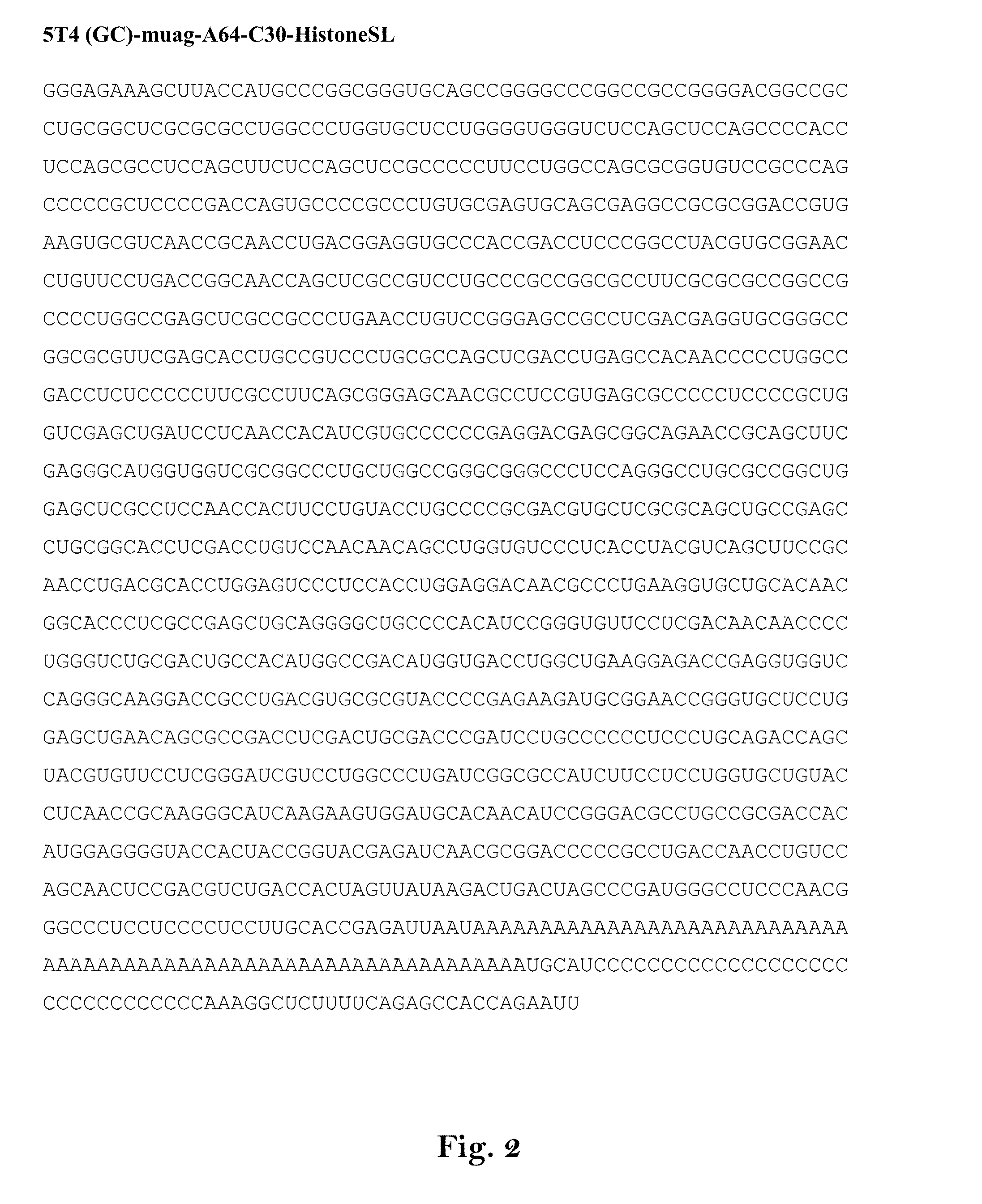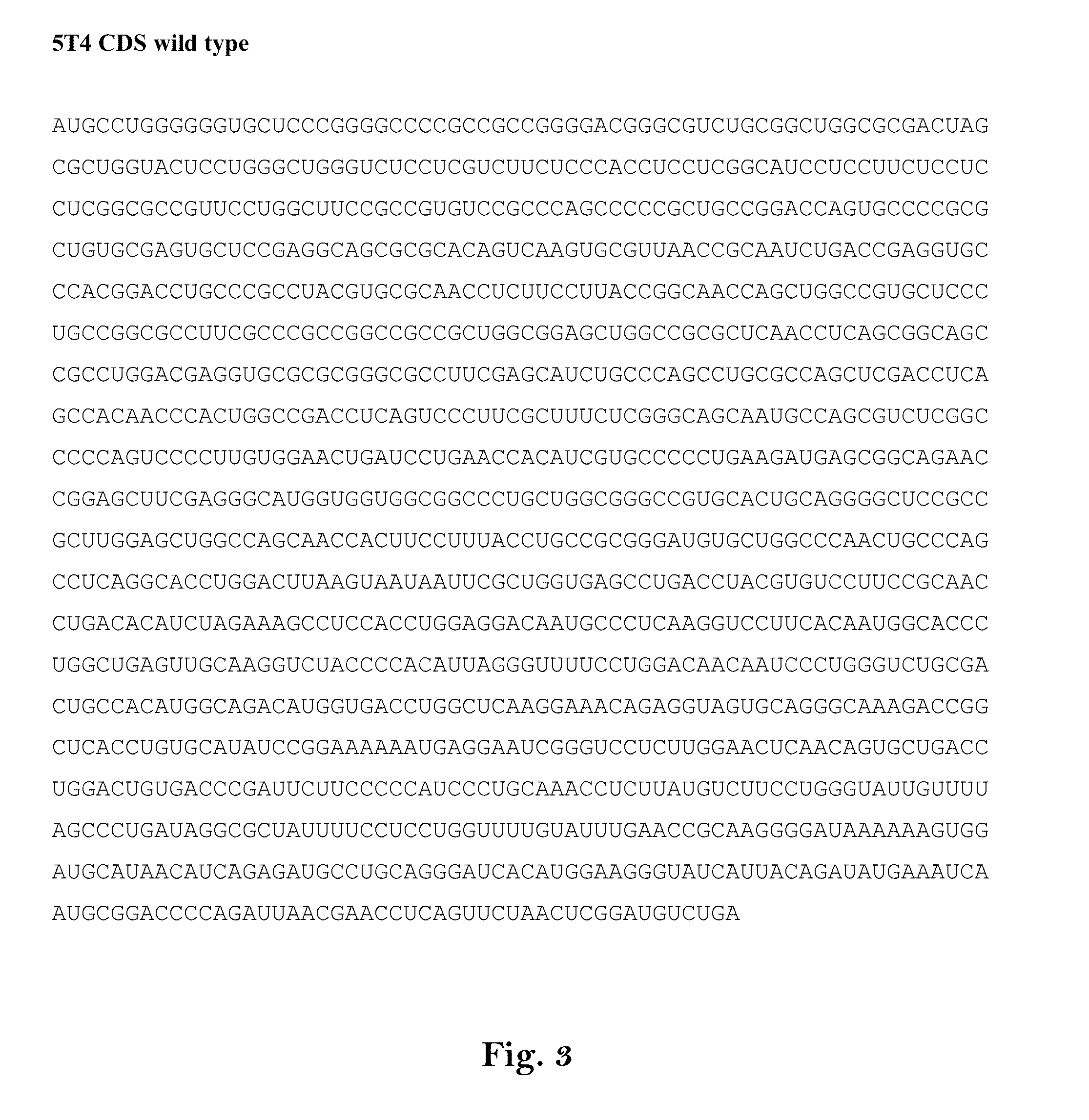Composition and vaccine for treating lung cancer
a technology for lung cancer and composition, applied in the field of composition and vaccine for treating lung cancer, can solve the problems of uncontrollable poor approach, and inability to rule out the risk of uncontrolled propagation of introduced gene and viral gene, etc., and achieve the effect of increasing the relative protein amount of said one or more antigens
- Summary
- Abstract
- Description
- Claims
- Application Information
AI Technical Summary
Benefits of technology
Problems solved by technology
Method used
Image
Examples
Embodiment Construction
[0311]The following examples are intended to illustrate the invention further. They are not intended to limit the subject matter of the invention thereto.
[0312]Preparation of an mRNA vaccine based on MUC1 and induction of antigen-specific cytotoxic T-cells:
[0313]1.1 Preparation of an mRNA Vaccine Based on MUC1:
[0314]The mRNA vaccine consists of GC-optimized mRNAs coding for MUC1 (SEQ ID NO: 16). The mRNA was complexed with protamine by addition of protamine to the mRNA in the ratio (1:2) (w / w) (adjuvant component). After incubation for 10 min, the same amount of free mRNA used as antigen-providing mRNA was added.
[0315]The resulting composition was dissolved in 80% (v / v) Ringer-lactate solution.
[0316]1.2 Vaccination
[0317]C57BL / 6 mice were vaccinated intradermally with 32 μg of one of the mRNA vaccines as described under 1.1 above. Control mice were treated injected intradermally with buffer (Ringer-lactate). Vaccination comprised five immunizations with 2 immunizations per week. The ...
PUM
| Property | Measurement | Unit |
|---|---|---|
| mass ratio | aaaaa | aaaaa |
| mass ratio | aaaaa | aaaaa |
| mass ratio | aaaaa | aaaaa |
Abstract
Description
Claims
Application Information
 Login to View More
Login to View More - R&D
- Intellectual Property
- Life Sciences
- Materials
- Tech Scout
- Unparalleled Data Quality
- Higher Quality Content
- 60% Fewer Hallucinations
Browse by: Latest US Patents, China's latest patents, Technical Efficacy Thesaurus, Application Domain, Technology Topic, Popular Technical Reports.
© 2025 PatSnap. All rights reserved.Legal|Privacy policy|Modern Slavery Act Transparency Statement|Sitemap|About US| Contact US: help@patsnap.com



